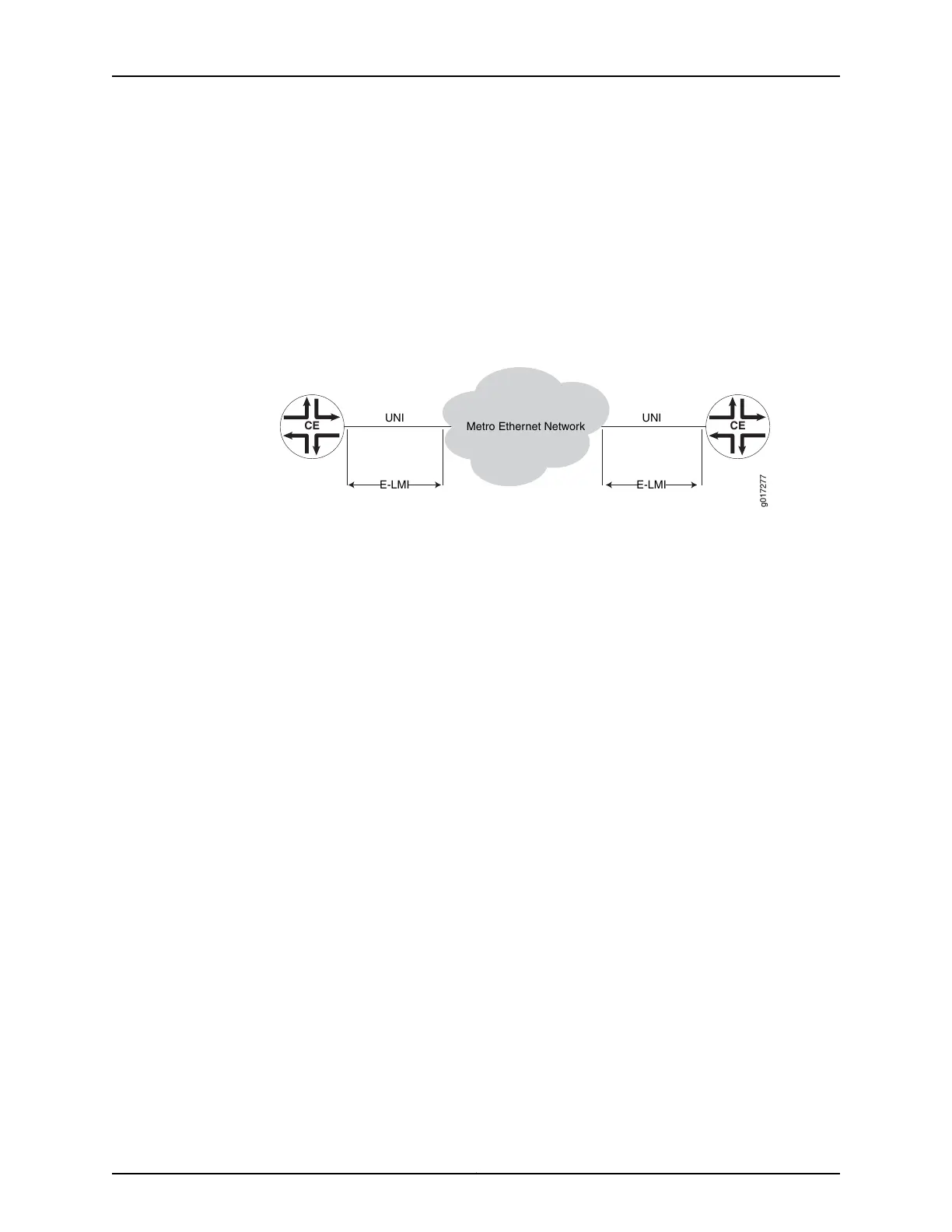to support Metro Ethernet services. The E-LMI protocol also provides user-to-network
interface (UNI) and Ethernet virtual connection (EVC) status information to the CE device.
The UNI and EVC information enables automatic configuration of CE operation based
on the Metro Ethernet configuration.
The E-LMI protocol operates between the CE device and the provider edge (PE) device.
It runs only on the PE-CE link and notifies the CE device of connectivity status and
configuration parameters of Ethernet services available on the CE port. The scope of the
E-LMI protocol is shown in Figure 60 on page 1114.
Figure 60: Scope of the E-LMI Protocol
CE CE
g017277
Metro Ethernet Network
UNI UNI
E-LMI E-LMI
The E-LMI implementation on ACX Series routers includes only the PE side of the E-LMI
protocol.
E-LMI interoperates with an OAM protocol, such as connectivity fault management
(CFM), that runs within the provider network to collect OAM status. CFM runs at the
provider maintenance level (UNI-N to UNI-N with up MEPs at the UNI). E-LMI relies on
the CFM for end-to-end status of EVCs across CFM domains.
The E-LMI protocol relays the following information:
•
Notification to the CE device of the addition or deletion of an EVC (active, not active)
•
Notification to the CE device of the availability state of a configured EVC
•
Communication of UNI and EVC attributes to the CE device:
•
UNI attributes:
•
UNI identifier (a user-configured name for UNI)
•
CE-VLAN ID and EVC map type (all-to-one bundling, service multiplexing with
bundling, or no bundling)
•
EVC attributes:
•
EVC reference ID
•
EVC status type (active, not active)
•
EVC type (point-to-point)
•
EVC ID (a user-configured name for EVC)
•
CE-VLAN ID and EVC map
Copyright © 2017, Juniper Networks, Inc.1114
ACX Series Universal Access Router Configuration Guide

